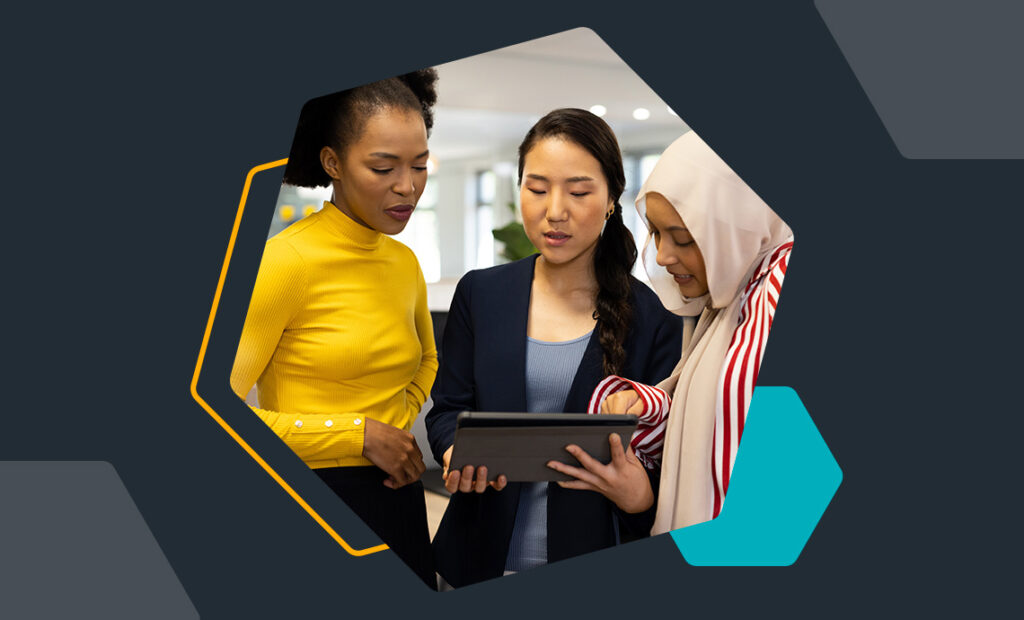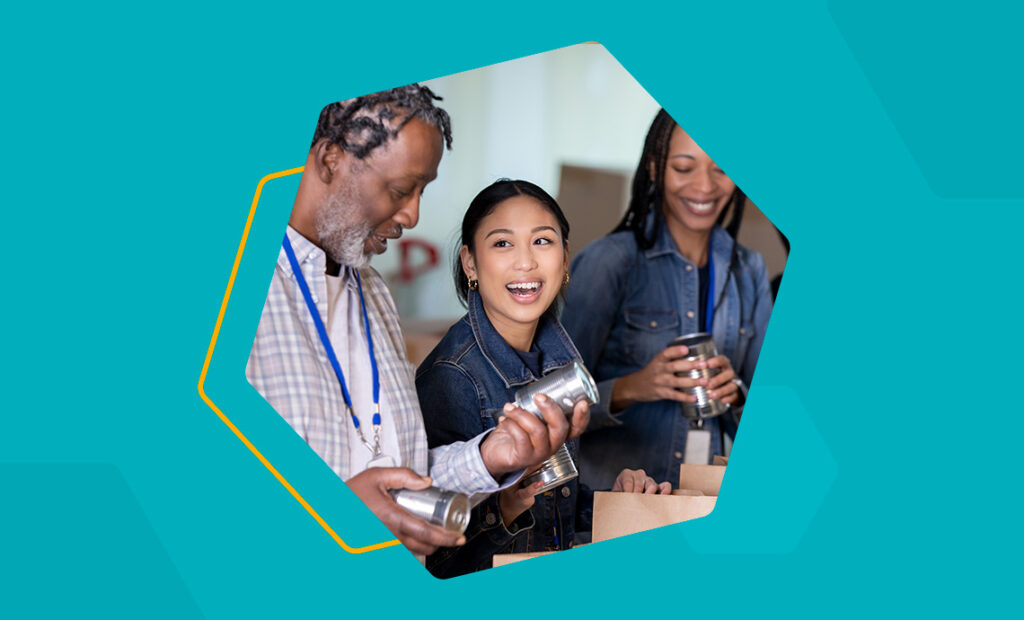Fundraising is about relationships.
And yet, Dunbar’s number tells us we can only handle about 150 relationships.
What’s a nonprofit fundraiser to do?
Well, first of all, relationships in Dunbar’s calculation mean personal relationships. It’s not likely you were planning to call on one of your donors to come over and watch your kids.
But that doesn’t mean we should approach donor relationships less intentionally. The key is finding the right tools to help you. Then applying the right strategy to make them work for you and for your donors.
You need a way to manage your data
We can collect data on donors and volunteers all the time. Too often, we only capture some of that information. And even when captured, too much isn’t usable.
The answer is a great donor management system. There are many out there. It can be hard to know what’s best for your organization. But please do not skimp on this purchase! The least expensive is NOT the only criteria you should use.
But before you make your decision, consider what information you will need. Basic personal information like name and address. Gifts, sure. How about online presence? (Are they active on a social media site?) Interactions with your website? (Do they visit often? If so, where do they go?) More detailed personal information? Contacts and channels? Notes from personal conversations? Financial information, like real estate transactions?
The potential is limitless. Your budget, and likely, your needs, are not. So prioritize.
Don’t buy before you try. You and any staff using the system need to be comfortable, or you’ll find people sneaking around the system’s design. (Sticky notes in a folder can’t be pulled up when you need to prepare a mailing!)
I firmly believe you should be able to sit down with a new system and find your way around it right away. If it takes weeks at a camp to train, the software is too complex. Find something that’s more intuitive.
Manage your data properly
Even the best system will fail if you don’t use it properly. Well-designed software will work and will shape how you think about organizing your information.
But it won’t save you from bad data hygiene.
If what you’re putting in isn’t organized, correct, or updated regularly, you will end up with a mess. (And believe me, it’s much easier to keep things in order than to fix a messed up database!)
That means all users must understand the rules for maintaining your data. How are people to be addressed? What about abbreviations? Will you be adding detail to gifts – like distinct sources (did this come from our December mailing? Or the January email?).
What information will your financial people need? Better to know that before you start. If they will be looking at distinct funds, then use them so you can stay in sync.
If you have a major gifts program (and you should, no matter the size of your nonprofit), be sure you approach capturing notes in a systematic way. Is this information you need to get out of the system? You need to enter it so you can!
Are you making sure addresses are updated? There’s no sense in sending a mailing to bad addresses, is there? So think about whether your system updates that information automatically. And if it doesn’t plan to have that done at least once a year.
Will someone on staff stay abreast of major changes – like the obituaries? You do not want to find out a long-time donor has passed because you sent an appeal.
Keep things tidy on a daily basis and this will be so much easier to do. And will make your data so much more useful.
Consistency matters for data – even when it doesn’t happen with staff
Create a manual that includes how to use the system AND how to maintain it. We know turnover is a big problem, especially for fundraisers. The person inheriting a system should know just how it’s meant to be used.
Consistency matters for your donors, as well. If you look at the data as the ongoing link to donor relationships, you’ll see how important it is to care for that link.
Here’s an example: I worked at one organization for nearly 12 years. I had my salutation set to read “Mary”. But each time the organization gets a new development director, I turn back into “Ms. Cahalane”. They think they’re being polite. To me, it feels like being kicked out of the family. What, suddenly I’m a stranger?
Data matters inside and out
Keeping your information in an organized, useful way matter a lot to you. But it also means a lot to your donors and others with whom your organization has relationships.
Good data shows in so many ways that are important to donors. Get names right. Addresses right. But also: use the information you have to make the right request at the right time.
Another organization I worked for had some of the most loyal donors. And the most regular. There was a group of them who gave once a year on the exact same date! Good data would tell me to be sure they were asked a month or so before that date – regardless of my overall mailing schedule.
Or perhaps a donor has said she prefers only a single solicitation each year. Can you manage that? You should be able to. (I would still ask if they’d like to receive our donor newsletter, of course. And a good many said yes, and made additional gifts each year because of that.)
Maybe you learned that a donor is really enthusiastic about one area of your mission. Can you create appeals for her that reflect her passion? Think about an animal rights organization. If they ask supporters whether they’re dog or cat people, can they create different appeals based on answers?
Relationships are two-way. If you’re managing both your donor relationships and your data properly, you’ll have plenty of information to collect – and use – to deepen those relationships. And you don’t have to keep it all in your head!
Data might not sound sexy. But don’t put its care in the hands of the intern (unless you have a very bright and dedicated intern). It’s important to fundraising success on many levels.
Give data the care it deserves, and you will see donor relationships bloom!
Track your data and donor dollars with donation management software
At MIP, we specialize in tracking donation dollars for nonprofits. With our charitable donations accounting software, you can manage all the complexities of nonprofit financial management. Adapt the program to your needs as your organization changes and grows, and simplify human resources management. If you’d like to learn more about our software, check out our website.
If you’re interested in seeing the software in action, request a demo!
As you’ve learned, managing data is crucial to the function of your nonprofit organization. On the other side of donation management are the donors who support your nonprofit. You know that fundraising is about relationships, and with donor management software, you can strengthen connections and encourage engagement within your community. Our parent company, Community Brands, understands how powerful a strong network of donors can be.
Their software allows you to create tailored communication initiatives to appeal to your donors’ interests and manage your campaign progress and success. Your mission relies on these connections, and now you can handle them within a single application. Show your donors you care with Community Brands’ comprehensive donor management software.
If you’d like to learn more about donor management software and other Community Brands solutions, request more information.
I’m Mary Cahalane, the principal of Hands-On Fundraising. I’m based in Connecticut and specialize in donor communications and fundraising planning. And I stuff a mean envelope.
I say that not because it’s the most important skill I’ve developed. But after 30 years in the nonprofit world, I still approach my work hands-on. I enjoy the dual nature of this work: half art and half science; half philosophy and half paper cuts. The creativity and intellectual work keep me excited. The paper cuts keep me grounded.
Helpful is my mission. My fundraising experience includes arts, community, social service and education organizations. I’ve helped to build successful fundraising programs by focusing on great communications, sensible planning, and strong donor relationships. Can I help you?




